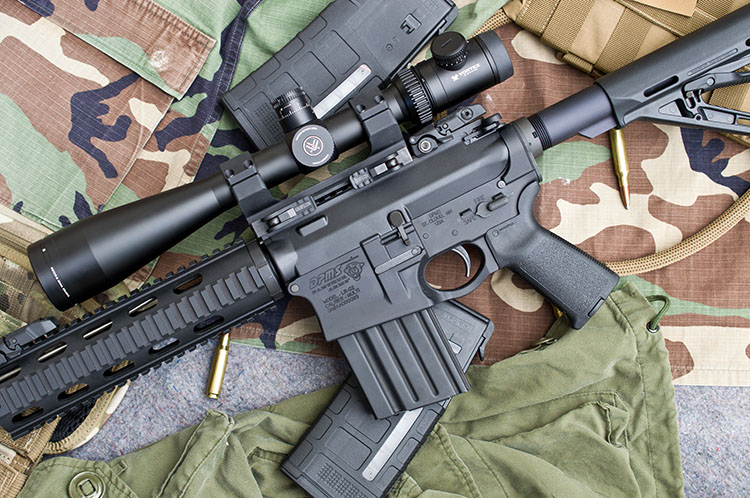
DPMS has been building both AR-10 and AR-15 pattern rifles for a long time. You’d have to figure they’d be good at it, although to be entirely honest, their reputation took a beating for a few years. The advent of the educated AR-15 consumer, spurred in large part by Rob Sloyer’s now famous (or infamous) M4 chart, resulted in widespread rejection of ARs from many well-known manufacturers who used unknown barrel steels, or mismatched feed ramps, incorrect front sight towers, or poorly staked gas keys. DPMS had, despite their lengthy history with the AR platform, grown lazy with regards to manufacturing processes and penny-pinching in regards to componentry, and this new breed of discerning rifle buyer punished them for it.
The period immediately following that shift in consumer education levels was rough, but the end result for manufacturers was undeniable: everyone had to get better. And for consumers, the windfall was spectacular. Within a few years, even the people who’d been putting out barely acceptable guns were building rifles which rarely needed more than a quick once-over by an experienced hand. By 2012, the golden age of AR-pattern rifles had begun.
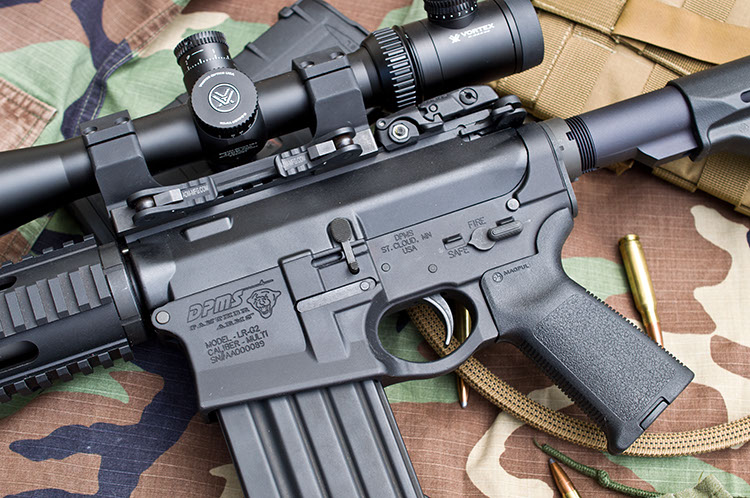
The downside to this change of ownership is that much of the contro l began to reside in the hands of investors who expected the parent company, Cerberus Group, to make short term profits, and it’s very easy to explain the period of limited quality control procedures and inattentiveness to detail from which DPMS rifles suffered by a devotion to making quick capital gains.
The upside is that when Remington Outdoor did recognize a change in the marketplace, the capital was on hand to finance some serious research and development, and to fund significant changes at DPMS.
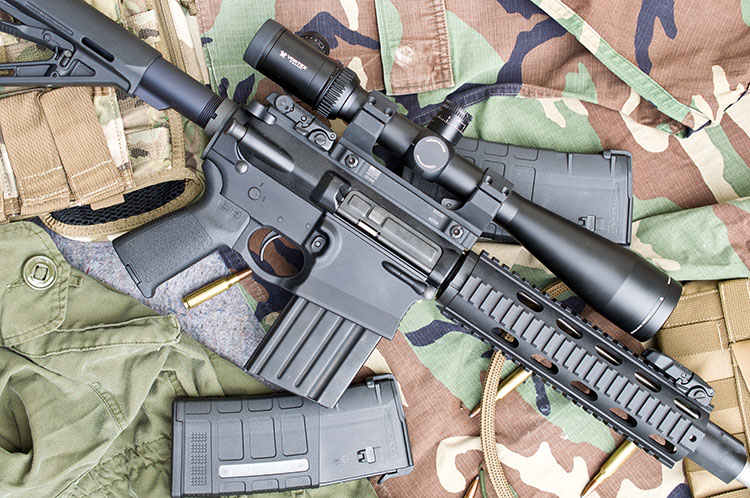
Although the AR-10 lost out in that round of military trials, it was licensed to a Dutch firm which produced it for military contracts outside of the United States, and the rifle performed well. Most significantly, it became the basis for the scaled-down AR-15, which, having been first adopted in the form of the M16 rifle and later the M4 carbine by the US military, is now the most popular rifle among NATO forces.
Meanwhile, with the world’s focus almost entirely on its younger brother, the AR-10 began to make a quiet comeback. Despite the massive success of the AR-15, most particularly in the close-range jungle and house-to-house fighting encountered in Vietnam and the cities of Iraq respectively, there was no question that a heavier, longer range rifle would have useful applications, and this became abundantly clear in the open spaces of Afghanistan, and the ranging, empty deserts of Iraq.
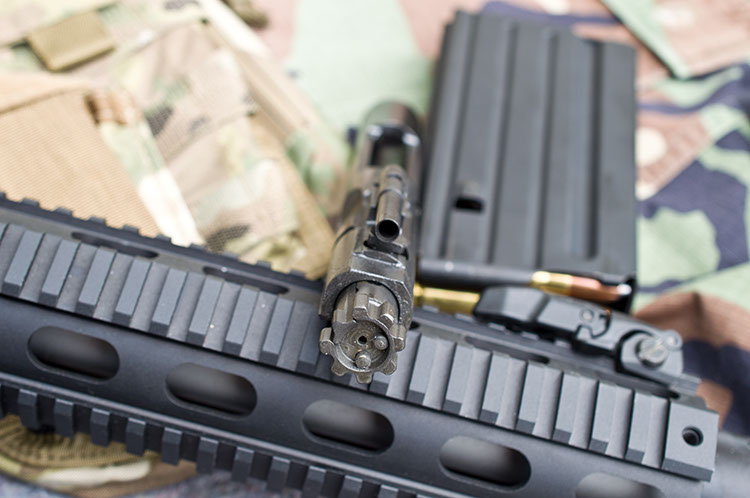
So we come back to DPMS, who had never given up on the mighty .308. For years, they were building AR-10s to varying specification using their own magazines and according to their own preferences. These rifles were often unusually accurate, but found detractors who remained skeptical of their use of extruded 6061 receivers and unknown parts suppliers.
Then, as military use of AR-10 class rifles such as Lewis Machine and Tool’s Modular Weapons System and the Knights Armament SR-25 took off, buyers began to search out similar platforms. The market evolved again, and suddenly the market for DPMS AR-10s began to expand. DPMS platforms such as the SASS and Oracle gained some traction, but further refinements were in the works, and finally the research and development funding made available through the Remington Outdoor could be put to serious use.
Perhaps most noticeable are the dimensions and weight of the DPMS GII rifles. The new upper is far more similar to an AR-15’s, with reduced height, length, and mass, duplicating the AR-15’s dimensions from the magazine well back. In fact, the dimensions have been sufficiently altered to make compatibility with many 5.56mm handguards possible as well. The new uppers are also now made from standard mil-spec forged 7075, which should put some minds at ease.
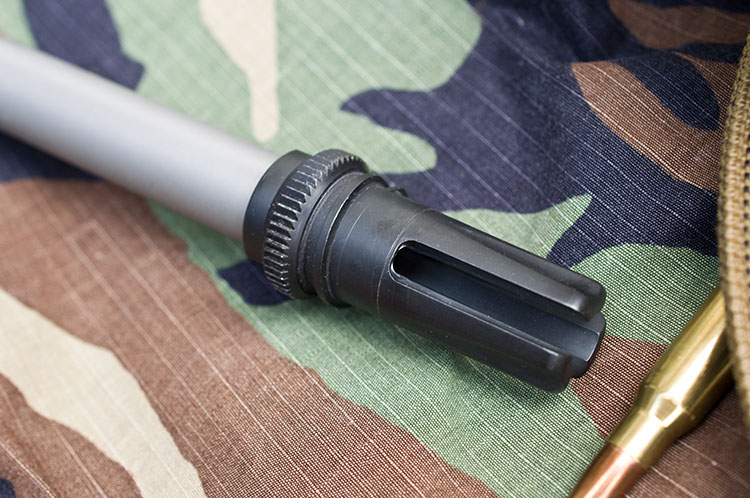
All in all, the rifles feel smaller, and weigh less, than any DPMS AR-10 we’ve seen. The weight of our DPMS GII Recon model tester (itself not the lightest of the bunch) was less than two pounds greater than our similarly equipped .223 reference gun, a Bravo Company Recce-16. The lightest models weigh 7.25 pounds; slightly lighter than Canada’s own C7 military rifle.
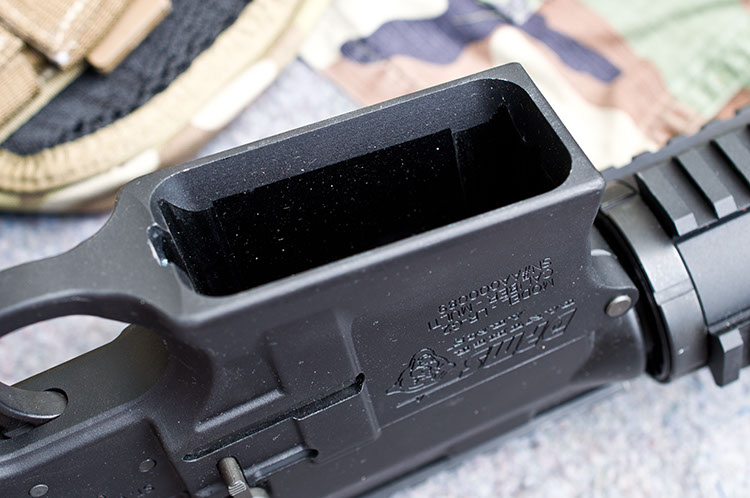
Inside the rifle, the changes get really interesting. The bolt carrier is a lighter weight monolithic design which incorporates the gas key right into the forging that is the absolute last word on staking gas key bolts: no bolts, no separate gas key, no failures.
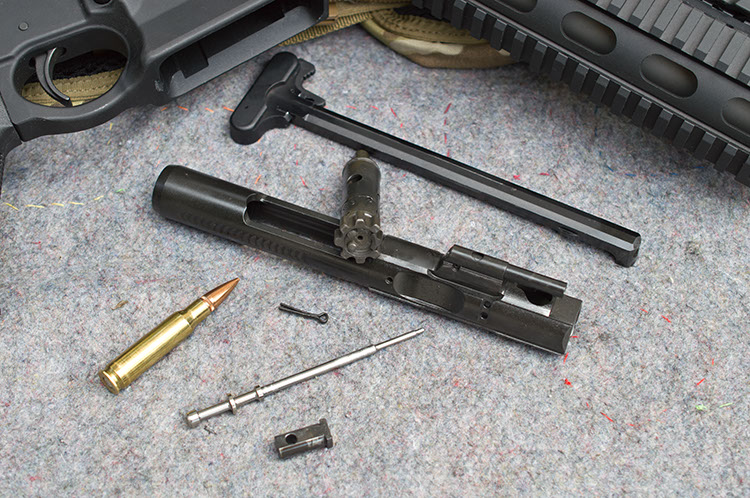
While we’re in the bolt, it’s worth mentioning the twin ejectors, which DPMS claims will not only enhance reliability in the short term but reduce strain on individual ejectors, thus leading to greater durability in the long term. The ejection port itself has been enlarged to further enhance the extraction/ejection cycle. Just ahead of the bolt, the DPMS GII sports an integral steel feed ramp pressed into the receiver itself, allowing for a simpler, lighter barrel extension. That integral ramp is part of the formula for shrinking the dimensions of the upper, and from what we’ve seen, it works.
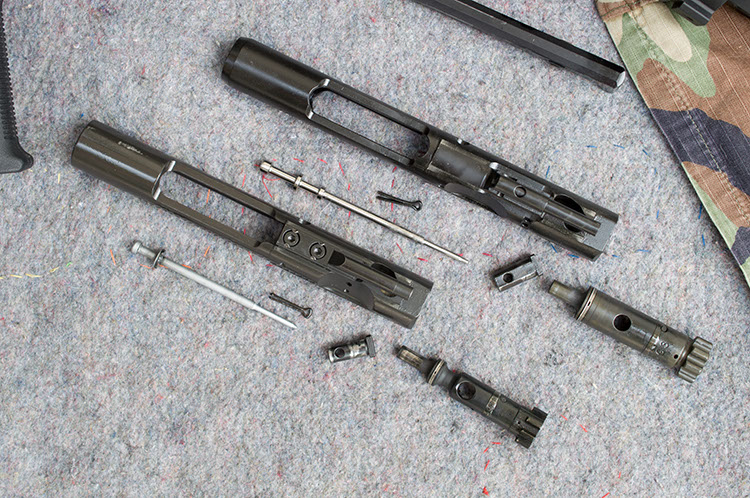
Over the course of a couple of days, we put everything from Chinese surplus ammo to Barnaul to Federal bulk to full-on Hornady Match through the Recon.
Without exception, this rifle is extraordinarily accurate. While naturally it gets peak performance with match ammo, even cheap surplus shot to what we suspect are very nearly the theoretical limits of the ammunition itself. Expect that quality ammunition will very likely produce groups at or below one minute of angle on the range, not just on the internet.
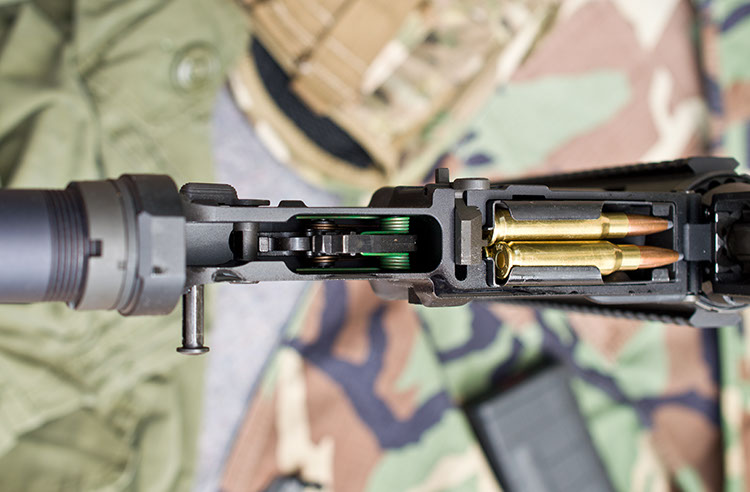
Ejection was impressively stable and predictable; this is important because in any system, reducing variables is the key to repeatability, and repeatability is reliability. If a machine can be made to perform tasks like case ejection in exactly the same way every time, then the variables surrounding that task have been reduced significantly. The Recon threw its cases almost horizontally to 4 o’clock, twenty feet away, with rocklike predictability. That’s a good sign.
Of course it wouldn’t be a gun review if we didn’t find something to complain about, and in the case of the GII, it’s the charging handle... or rather the buffer spring behind it. Substantially stronger than an AR-15 spring, the small handle of the GI-spec charging handle is hard to work, and everyone who shot the Recon commented on the stiffness of the action.The upside to DPMS’s decision to use a standard charging handle is that you can replace it with whatever upgrade you like, quickly and easily and relatively inexpensively. But you will almost certainly want to replace it.
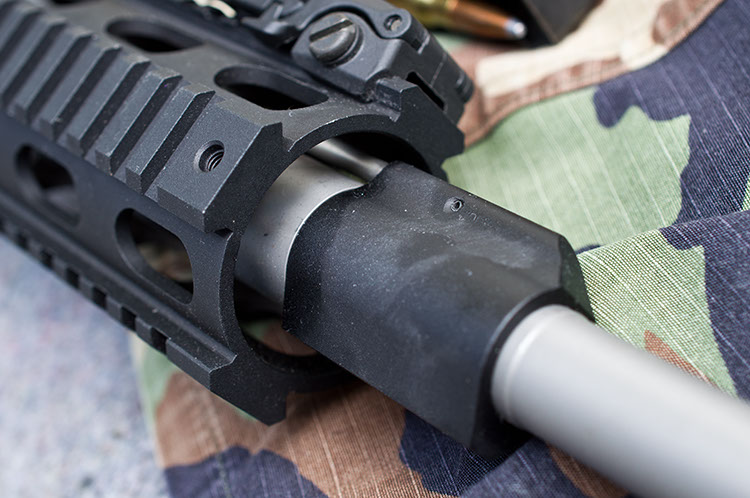
There is one other step which the user should take on receiving a DPMS GII: the castle nut should be staked to prevent it backing off. This is a minor detail which can be resolved in seconds, but in the future, we’d like to see DPMS make sure that all the staking that can be done, even with the gas key concerns obviated by monolithic bolt carriers, gets done at the factory, not on the workbenches of consumers.
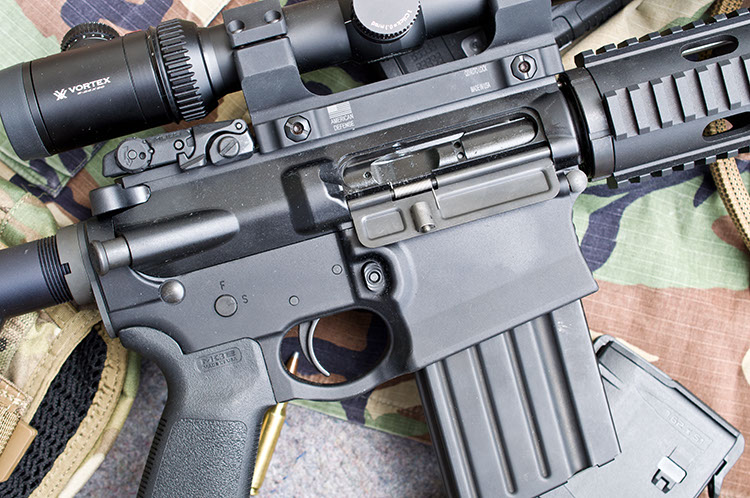
The muzzle device, interestingly, is another area in which DPMS has benefited from its association with Remington Outdoors: they have access to Advanced Armament Corporation equipment.
Sadly, in Canada, the muzzle device will only fulfil half of its intended role for the time being: it’s the Advanced Armament Corporation 51T Blackout, which means that it’s a flash hider threaded for an AAC suppressor. The Blackout is a quality prong-type flash hider, and certainly we felt no need to trade it in for a muzzle brake: the recoil is just not severe enough to warrant a brake. But we’d like to one day see shooters in this country having the option of mounting a suppressor for the same reasons hunters do in the Scandinavian countries: to reduce the fairly severe sound blast of the rifle before hearing damage sets in from long term use.
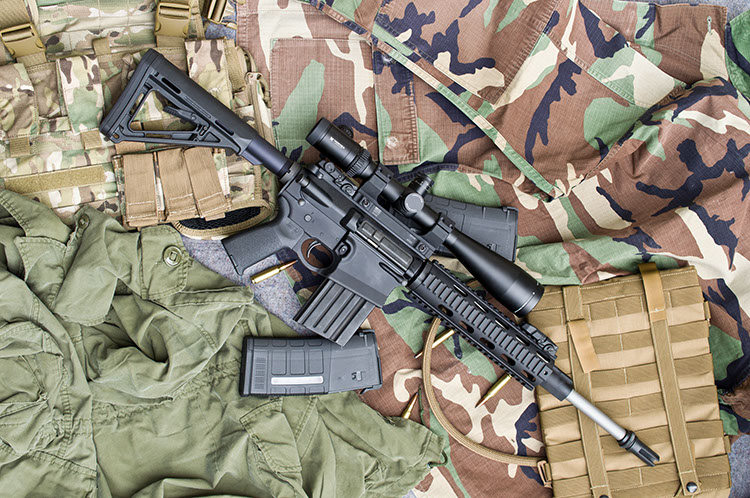
Overall, if you’re in the market for a heavy duty range tool in .308 Winchester, you’ll have a hard time doing much better than this. We’re impressed.